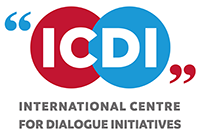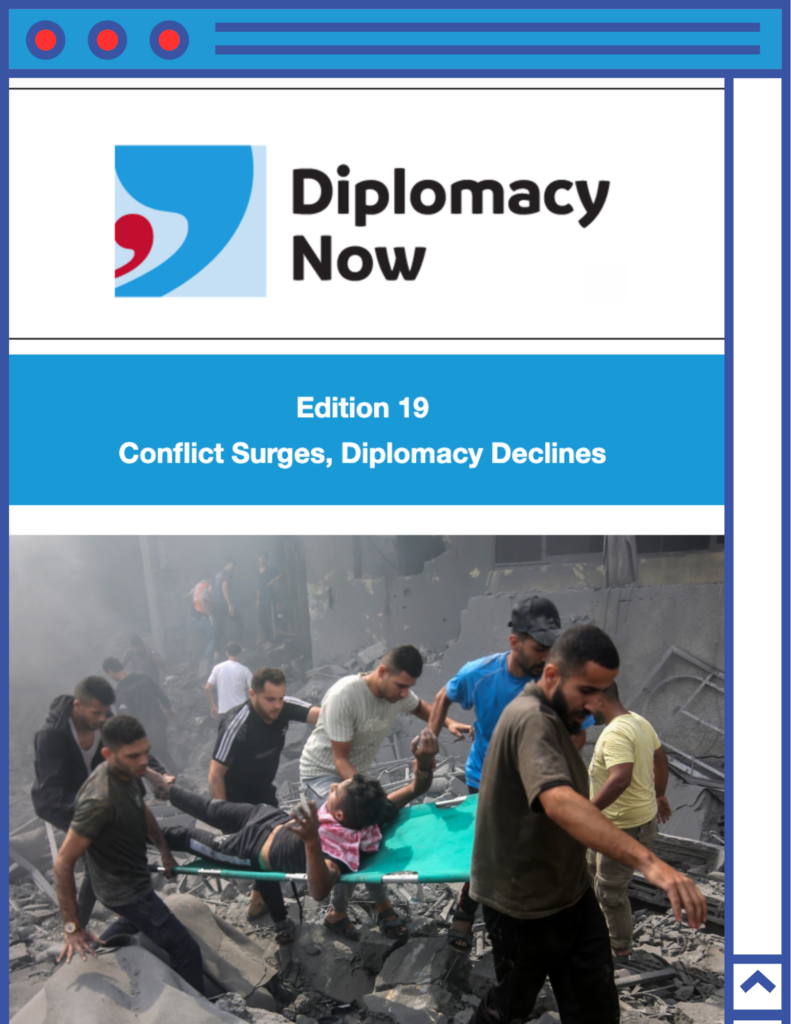Many so-called ‘day after’ plans for the current conflict between Israel and Palestine have been in circulation since October 7, 2023. These plans presume that the current conflict will end and they outline what different groups believe ought to happen in Israel and Palestine after the conflict ends. However, it is worth noting that these plans themselves do not aspire to put an end to the conflict. While countless individuals and organizations have written pieces about the ‘day after’ in Gaza, this article will focus on specific plans with concrete proposals about what should happen in the region.
Although all plans touch upon the questions of security, reconstruction, and humanitarian relief, they all place a different amount of emphasis on each. Accordingly, plans can be roughly divided into three categories: security-forward plans, reconstruction-forward plans, and humanitarian-forward plans. In the rest of this article, I will go through each category in order and explain the plans they encompass.
Security-forward Plans
Security-forward plans are characterized by an emphasis on Israeli security and preventing an attack like October 7 from occurring again in the future. This is characterized by a hard line against Hamas, demanding their total removal from the Gaza strip and any future governing body in Gaza. The paradigmatic security-forward plan is the one Netanyahu has come to articulate over a series of public statements. Netanyahu’s plan demands the complete demilitarization of Gaza, total freedom of operation for the Israeli Defence Force (IDF) in the area, and a new civil administration composed of Gazan locals. The plan distrusts the Palestinian Authority (PA) and the UNRWA, refusing to collaborate with either and calling for the dismantling of the latter. It also predicates the reconstruction of Gaza on the deradicalization of Gazans. The plan makes no concrete commitments to the long term political status of Palestine or Gaza. Similar plans are proposed by the Israeli Policy Forum (IPF), Institute for National Security Studies (INSS), and the Mitvim Institute (MI). Though the views of these plans on the PA differ, they are united in their commitment to a significant Israeli security presence in Gaza after the end of the conflict.
The INSS plan is the most stringent of the three. It calls for a reformed PA led by Fatah to eventually take over civil administration in Gaza but argues that security governance must remain with Israel. The IPF plan is less stringent. It views the PA and the UNRWA in a nuanced manner and suggests that a reformed PA takes over civil and security administration from Israel in Gaza in a phased manner after the PA makes necessary reforms. However, despite supporting a US trained and vetted PA Security Force, it stresses that there should be substantial security cooperation between the new force and the IDF. The MI plan like the Netanyahu Plan calls for the demilitarization of Gaza and security cooperation with Israel to end terrorist threats originating in the region.
Another category of security-forward plans are plans that suggest Gaza be governed partially or fully by an international transitional administration (ITA). They are motivated by the belief that the current PA is unfit to govern in Gaza, an interim governing arrangement must be established, and the total removal of Hamas from Gaza. These plans are by the Hudson Institute (HI), JINSA/Vandenberg (JV), and the ‘Wilson Center’ (WC). The HI Plan proposes that a non-UN ITA be established in Gaza with Arab and US support. The plan excludes both Israeli and Palestinian governance in Gaza in the interim and focuses on humanitarian issues in Gaza and deradicalisation of the Gazan population. If support from the US and Arab states are insufficient, the plan calls for the use of private military contractors. This model of US and Arab backing for an ITA supplemented with private military contractors is shared by the JV plan. The WP plan is the most developed of all the ITA plans, detailing the organizational structure of the ITA, consultation with locals, the training of new security forces, and deradicalisation programs. Like the previous two, it calls for the establishment of an international peacekeeping force to maintain security in Gaza and the total elimination of Hamas from the area. However, all three ITA plans do not discuss the long term political status of Palestine. Some less stringent ITA plans are by Nabil Fahmy (NF). The NF plan calls for the establishment of a UN trusteeship over Gaza with the intention of creating a Palestinian state along the 1967 borders.
Reconstruction-forward Plans
Reconstruction-forward plans differ from the security-forward plans insofar as the primary objective is the creation of a functional and sovereign Palestinian state in the aftermath of the conflict. The status of Hamas in these plans range from exclusion as with security-forward plans to tentative inclusion in future governance as a concession for peace. The paradigmatic reconstruction-forward plan is the PA plan.
The PA plan argues that its authority in Gaza must be comprehensive and clear for it to effectively administer the necessary humanitarian aid. Much of the plan is devoted to outlining cooperation with NGOs, civil society, and other private organizations. The PA stresses the importance of the UNRWA and wants Israel to play a larger humanitarian role in Gaza. However, the question of security and Israeli security in particular is not addressed within the plan. Other reconstruction-forward plans are by the Palestinian Policy Network (PPN), the Washington Institute for Near East Policy (WINEP), the Rockefeller Foundation and Middle East Institute (RFMEI), and Salam Fayyad (SF).
The PPN plan is agnostic about whether the PA should be the polity to govern Gaza. However, it is stern in its emphasis that governance ought to be by local Palestinians and that Gaza and the West Bank must be administered by the same Palestinian polity in the long run. The plan emphasizes the urgency of Palestinian led reconstruction of Gaza. The plan does not mention the status of Hamas or security.
The WINEP plan calls for Gazan demilitarization and a total exclusion of Hamas from governing. However, it also emphasizes the importance of a revitalized PA in effectively governing Gaza and expresses support for a two-state solution in the long term, albeit without commenting on what the borders of the two states will likely be.
The RFMEI plan calls for the establishment of a Palestinian-led transitional authority which is supported by but independent from the PA. Security would be managed by staff from the West Bank and US trained forces. An international security force should also be deployed in the interim drawing primarily from neighboring Arab states. Humanitarian aid should be provided by NGOs, other states, and private actors. The UNRWA continues to play an important role in providing aid.
The SF plan also emphasizes the importance of a revitalized PA and a two-state solution although explicitly along the 1967 borders. The plan is also unique because it explicitly envisions Hamas participation in the future governance of Palestine since Hamas is a major political player in Gaza. Excluding Hamas will only invite them to conflict with whatever entity ends up governing.
Humanitarian-forward Plans
Aside from plans primarily concerned about security or the political status of Palestine, there are also a number of plans that deal with alleviating the ongoing humanitarian crisis. Plans of this type are epitomized by the Phoenix Plan. The Phoenix Plan takes a proactive approach suggesting novel mechanisms for funding reconstruction in Gaza as well as stressing cooperation with NGOs to restore critical infrastructure. It also takes a pragmatic approach to the role of Hamas in the future governance of Gaza as a demilitarized political party to ensure that Hamas does not militarily oppose future governing efforts. Other humanitarian-forward plans are by Palestine Emerging (PE), A Humanitarian Plan for Gaza (HPG), and Rebuilding Gaza (RG).
The PE plan is almost singularly focused on addressing ongoing humanitarian issues and facilitating the long-term economic development of Gaza. It makes no mention of security or the long term political status of Gaza, only presuming that there will at some point be an independent and sovereign Palestine.
The HPG plan is focused mainly on addressing immediate humanitarian needs in Gaza through promoting cooperation between the US, Israel, and the PA. It suggests that more points of entry for humanitarian aid ought to be opened to Gaza. However, the HPG plan lacks details about the future governing arrangement for Gaza nor security issues.
Jeffrey Liu is a researcher at the Cambridge Initiative on Peace Settlements and a DPhil in Politics student at the University of Oxford. He has written research reports post-war planning for the ongoing conflict between Israel and Palestine as well as research reports on the civil war in Burma. He previously obtained his MPhil in Politics and International Studies at the University of Cambridge and his BA in Philosophy, Politics, and Economics at the University of Oxford.




